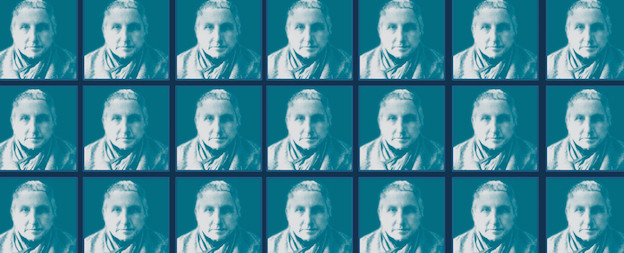Unlikening 'Tender Buttons'

Tender Buttons has become a go-to book for teaching Stein. In concentrated (i.e., short, teachable, anthologizable) form, it gives us the cubist Stein, the erotic-domestic Stein, Stein the abstractionist, Stein the polysemist.
In the arc of Stein’s career, Tender Buttons is (along with the Autobiography) one of the key nodes of change; it marks the dramatic shift from her initial constellation (Leo Stein, William James, science, typology, fiction) to the long efflorescence that followed (Toklas, Picasso, continuous excited language play, public presence). A Stein who stopped writing after The Making of Americans would cut a quite different figure.
But while Tender Buttons has become a central Steinian site for teachers, critics, and poets, I want to follow the lead of Joshua Schuster’s great piece in Jacket2 and emphasize how unfamiliarit is. “No one has settled how this book should be read,” Schuster writes; and he further unsettles matters via the quite unSteinian story of the mysterious midwifery of “Claire Marie” (Donald Evans): it was Claire Marie who suggested the format of three sections, Claire Marie who put “Objects” first; Claire Marie who elicited the title — arguably the two most resonant words Stein ever wrote.
I don’t want to gainsay the cubist, domestic erotic, polysemous readings of Tender Buttons, many of which are exciting and quite a few convincing, but I do want to emphasize how much it remains, as a naturalist might put it, non-descript (i.e., interestingly unknown).
What if the pieces are not cubist, erotic, domestic portraits in any settled or unsettled sense? Yes, there is Stein’s by-now commonsense explanation that she became “more and more excited about how words which were the words that made whatever I looked at look like itself were not the words that had in them any quality of description”; but a page earlier in “Portraits and Repetition,” she writes: “I for a time did not make portraits because I was trying to live in looking … In Tender Buttons, I described anything.”
It’s useful to remove the familiar frames from Tender Buttons, rather than trying to make it “look like itself.” What if some titles are not titles at all but teasing, agonistic, syntax-wielding postscripts: “Peeled Pencil, Choke”; “This Is This Dress, Aider”? (By the way, though Stein was great with titles, a title is, in some sense, rather unSteinian, entailing comparison — How is this like that?)
What about the surprising absence of pronouns, especially of “you” and “I”? Before and after Tender Buttons the materials of Stein’s writing were thoroughly social: the early typologies; the later playful manipulations of daily life. Tender Buttons, while it can be yoked into wider Steinian narratives by judicious selection, is different. In it, the part/whole question of Stein’s writing stays open-ended. In most of Stein’s work, we are reading a stretch of Stein’s activity, focused around themes, questions, procedures; here, we’re reading separate pieces. And within any piece are we reading longer units (phrases, sentences, paragraphs), or, more mysteriously, individual words?
Black ink best wheel bale brown.